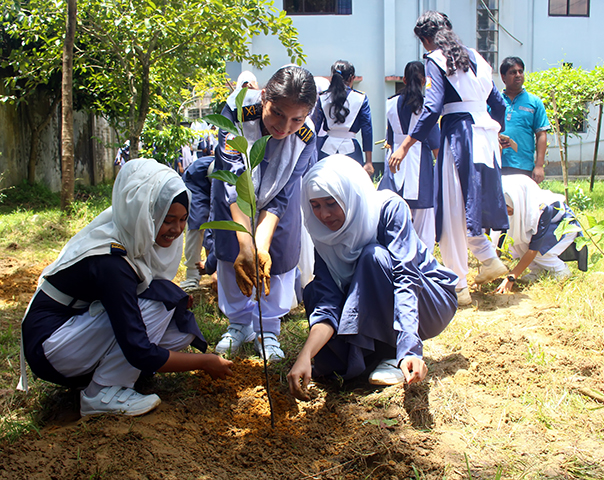Decentralizing Education Expenditures: Primary School Community Grants in Niger
Policy Issue
In recent years school enrollment has risen dramatically in developing countries, prompting a renewed interest among policymakers in education management. Provision of educational services is centrally administered in much of the developing world, but evidence suggests that decentralized, locally administered services may be better suited to address low education quality. Local administration and oversight puts power into the hands of those with the most interest in seeing improvements in service delivery, and the best information about current education quality. By empowering local communities, decentralized management has the potential to combat systemic teacher absenteeism and reduce misallocation and corruption.
Context of the Evaluation
Niger has made significant strides in increasing access to education in the past decade, with primary enrollment increasing from 37% in 2000 to 54% in 2005. Yet the country still faces considerable challenges with regards to access, rates of primary school completion and the quality and management of the educational system at all levels. One problem, for example, is that schools are spaced far apart, making it difficult for the central government to effectively monitor them.
To address this problem the Ministry of Education mandated the creation of management committees (Committees de Gestion Scolaire, or COGES) for each school. The committee included the director of the school, as well as locally-elected community members. The COGES are responsible for monitoring teacher attendance and performance and managing both financial and material resources, such as the purchase of textbooks and supplies. The Ministry of Education introduced a pilot project to reinforce the capacity of the COGES through the provision of a yearly cash grant, which can be used to fund a part of its activities for the year, such as the construction of classrooms or the purchase of materials. These grants were provided under the belief that such financial support would spur communities to take a more active role in the management of schools.
Details of the Intervention
To test this belief, researchers, in collaboration with the World Bank and the Nigerian Ministry of Education, randomized the allocation of the grants. They observed schools which did and did not receive grants, to estimate their impact, as well as the impact of two supplementary accountability interventions on school management, student retention and learning achievement. One thousand schools in the regions of Tahoua and Zinder were randomly selected into treatment and comparison groups. The 500 schools in the treatment group each received an annual lump sum based on the number of classrooms in the school, averaging out to around US$2 per student. This grant size was chosen by the Ministry of Education with considerations of sustainability regarding a possible extension of the program. In addition to the grants themselves, two sub groups were randomly selected to receive complementary interventions designed to improve delivery and management of the grants.
One third of the treatment schools received financial monitoring in the form of a letter received at the beginning of the intervention telling the committee there was a 50% chance of a “financial control visit” at the end of the school year. Because of financial and capacity constraints, about 20% of the treatment schools received visits at the end of the year.
Another third of the treatment schools received expenditure restrictions in the form of a list of non-eligible expenditures, such as reimbursing school officials for travel, or spending money on things that can be produced locally.
Researchers used annual administrative survey data, pupil test score data, and a detailed financial questionnaire to determine the effect of the grants. The testing used a modified standardized test implemented in collaboration with the Ministry of Education Department of Education Assessment. The school data contained information on pupil and community participation, school resources and infrastructure and information on issues facing school governance. The functioning of the COGES, including how often they met, what they talked about, and whether they began improvement projects, was also monitored.
Results and Policy Lessons
Supportive actions, which include parental financial and in-kind contributions, parent supervision of pupil attendance, and parent remedial action for pupil absenteeism, increased by 0.14 standard deviations in treatment communities. Most of this overall effect came from an increase in parental contributions to the school, which was 0.48 standard deviations higher in the treatment group. The overall impact was larger when the school committee was educated and was somewhat smaller when families live farther from school.
Management activities, which include parents’ association and school committee meetings, and whether the school committee is in charge of collecting fees and how they decide how the fees are spent, was 0.09 standard deviations higher in the treatment group. Specifically, the proportion of school committees in charge of collecting fees increased by 27 percent, the proportion of active parental association increased by 18 percent, and the frequency of school committee meetings increased by 5 percent.
Oppositional actions, which include supervising teacher attendance and sanctioning teachers, increased only in communities where the school committees were educated. In these communities, teacher supervision increased by 0.13 standard deviations.
Impact on school quality: The results indicate no short-term improvements in school quality, measured in terms of accountability and teacher effort. The lack of an impact on teacher effort is in line with the fact that very few of the schools undertook any sort of teacher supervision. However, one year after the treatment, the grants marginally improved (0.04 standard deviations) the material quality of schools. This improvement was largely driven by increases in the number of classrooms and construction of walls around the compound.
Impact on demand for education: The grant program led to a 0.17 standard deviation decrease in dropouts and a simultaneous 0.10 standard deviation increase in enrollment of students in Grade 2, indicating an increase in demand for education for young children.











